Which of the following statements best describe MPLS fast reroute characteristics? (Choose two)
Which of the following statements regarding the last two octets of the LDP identifier is true?
Which of the following indicates the path over which an LSP's tail end router will return an RSVP RESV message?
Click on the exhibit button below.
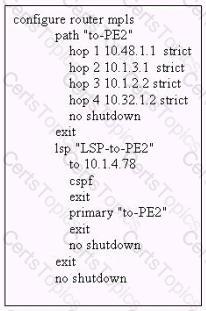
Given the configuration below, what is the system ID of the destination node?
When configuring an LSP for fast reroute one-to-one protection, which of the following statements is true?
During node protection signaling, the PLR knows the address of the MP from which of the following methods?
Click on the exhibit button below.
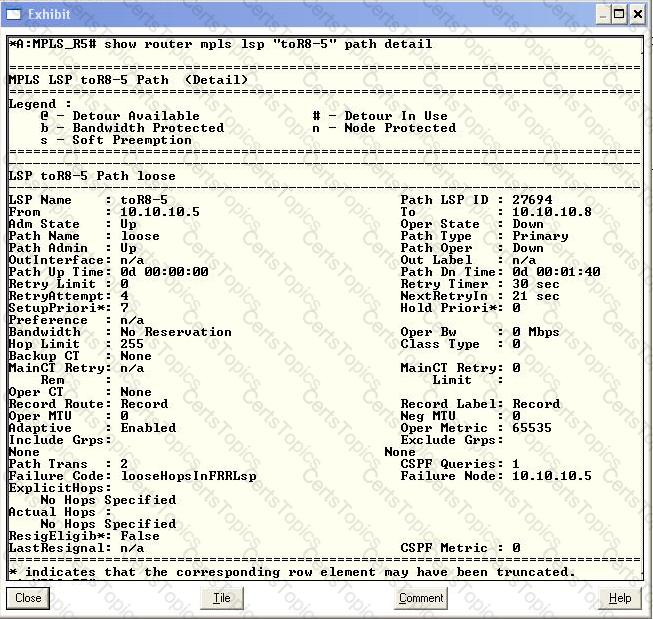
LSP "toR8-5" requests fast reroute protection on the primary loose path. What could be done to remove the Failure Code shown?
Which of the following is described by the following statement? An LSR propagates a label mapping only for a FEC for which it has a label mapping for the FEC next-hop.
Which default LDP parameter are you able to change with CLI?
Which of the following statements is true when the implicit null is implemented?
Click on the exhibit button below.
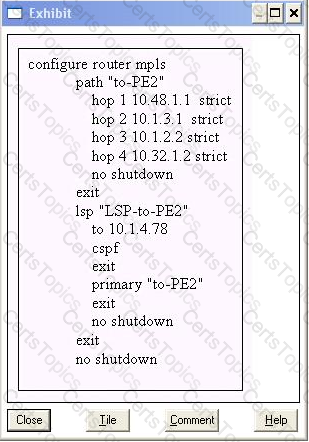
Given the configuration below, which of the following commands would enable fast reroute on the LSP? Choose two answers
Which of the following is a primary cause of IP hyper-aggregation?
Which of the following about per-interface label space is TRUE?
True or False? MPLS may use an existing data link layer header field to identify a label, instead of using a specific MPLS header
How have Traffic Engineering extensions to IS-IS been implemented?
Which of the following devices can originate an opaque LSA?
Which of the following regarding MPLS Encapsulation is FALSE?
When a device receives a labeled packet, which of the following can occur?
Which of the following statements regarding the MPLS SWAP label operation is true?
LDP is enabled on both ends of a point-to-point link, but the "show router Idp status" command indicates that LDP is operationally down. The Oper Down Reason field shows the message "systemIpDown." What might cause this condition?
Click on the exhibit.
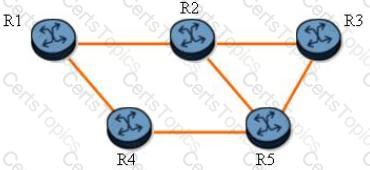
The path of a fast reroute protected LSP is R1-R2-R3. Which of the following about the protected LSP path is TRUE?
What are the default settings for RSVP-TE on the Alcatel-Lucent 7750 SR?
Which of the following is TRUE when the explicit null is implemented?
Which of the following is NOT an application of MPLS?
Which of the following regarding MPLS label value assignment is FALSE?
Initially, all ports on an Alcatel-Lucent 7750 SR have 10Gbps bandwidth. RSVP configuration limits reservable bandwidth to 30 percent on all interfaces. An LSP is signaled reserving 1 Gbps bandwidth. How much unreserved bandwidth is left on the interface?
Click on the exhibit.

Which of the following is FALSE?
Which of the following regarding MPLS encapsulation for VPRN services is TRUE?
Consider a device that uses per-platform label space; which of the following fields is NOT contained in the LFIB?
Which of the following describes 6PE?
Which of the following about an LSP protected with one-to-one FRR is TRUE?
Click on the exhibit.
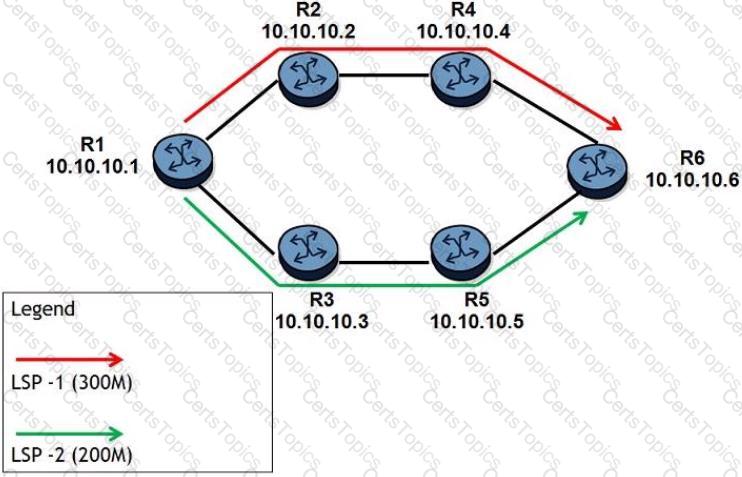
Initially, all links along the path R1-R2-R4-R6 have 400Mbps unreserved bandwidth and all links along the path R1-R3-R5-R6 have 800Mbps unreserved bandwidth. Shared Explicit reservation style is used and Make-Before-Break is enabled. Both fully loose LSPs have been signaled as shown. Later, the configured bandwidth for LSP-1 is changed to 400Mbps. Which of the following is TRUE?
Click on the exhibit.

An LDP-over-RSVP tunnel is established between routers R1 and R6. There is a VPN service running between routers R1 and R6. Which of the following is TRUE?
All links have 1Gbps unreserved bandwidth initially and all LSPs have the least-fill feature enabled. After the two LSPs have been signaled as shown, two new LSPs are configured. LSP-3 is signaled first with 600Mbps reserved. LSP-4 is signaled after with 800Mbps reserved. All LSPs have the same setup and hold priorities. Which paths will CSPF choose for LSP-3 and LSP-4?
Which of the following best describes downstream unsolicited label distribution?
Click on the exhibit.
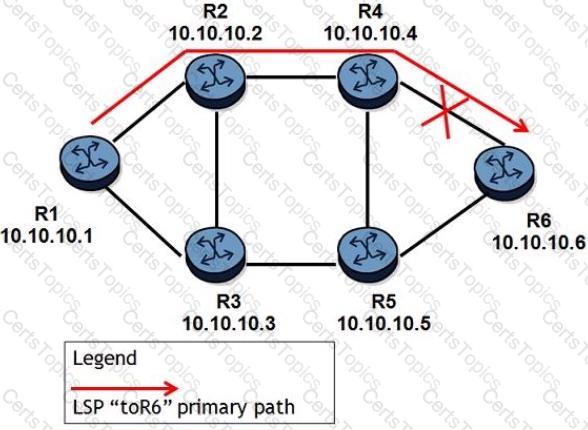
An LSP path is established on router R1 toward router R6. After router R4 detects that the link between routers R4 and R6 goes down, which of the following will affect the failure propagation time?
Click on the exhibit.
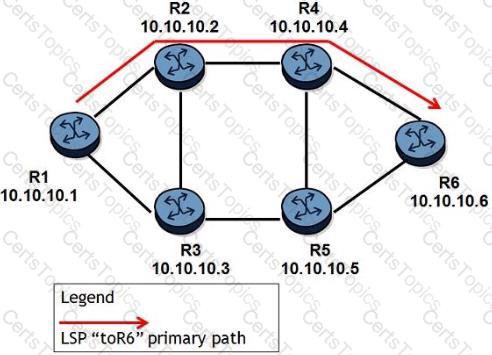
Which of the following CANNOT be used to ensure the LSP toR6" will follow the path R1-R2-R4-R6?